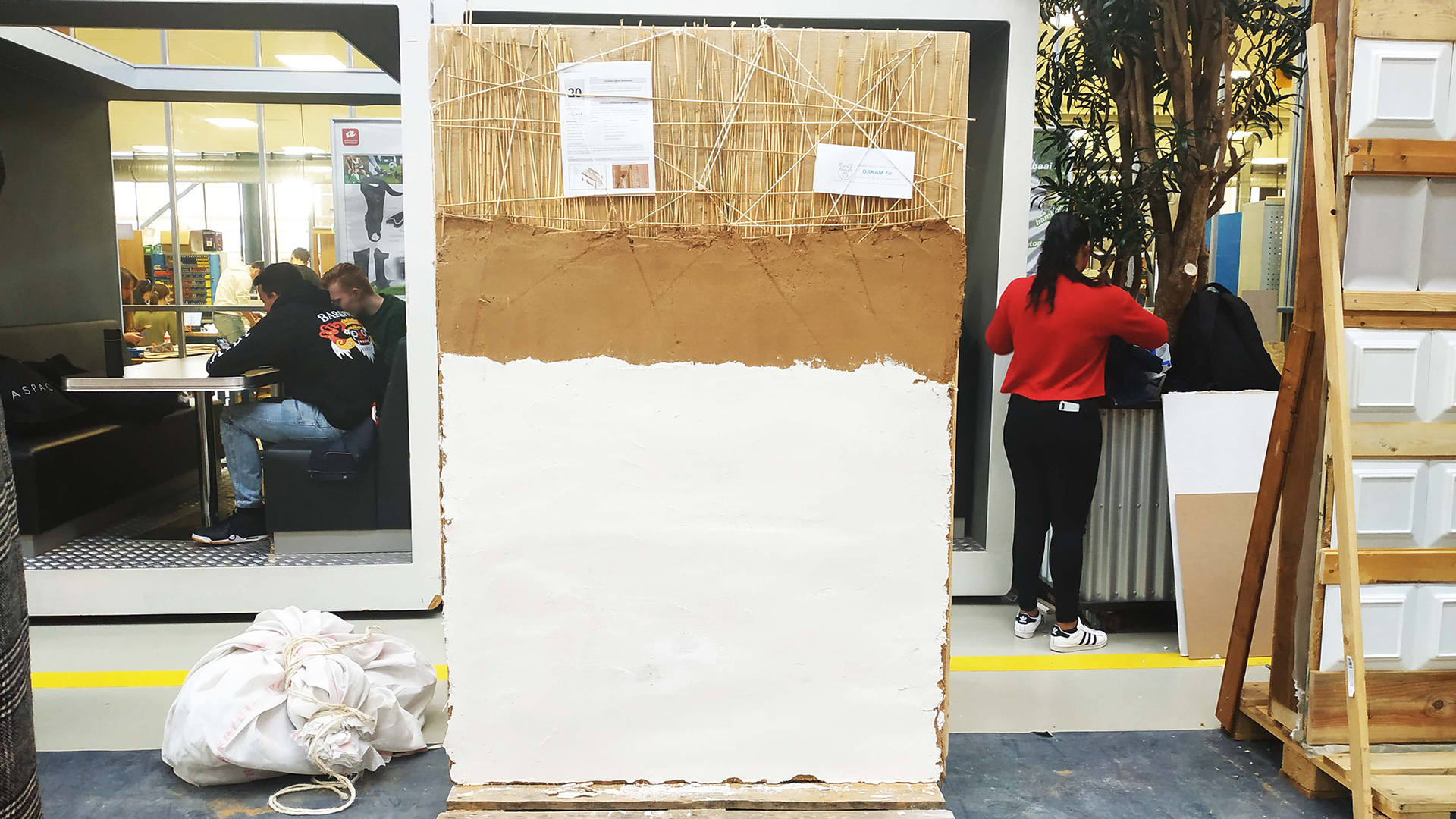Circular energy-retrofitting
How can the energy transition be connected to creating a circular economy? Using a circular renovation module for the energy-retrofitting of housing offers a combined answer to the two challenges. TU Delft is developing the Circular Skin, together with AMS Institute, Dura Vermeer, housing association Ymere. Students from Rotterdam University of Applied Sciences created the first prototypes, exploring different materials and construction methods.
In a circular economy, we aim to use less material, use components and materials longer, and close resource loops. Additionally, many homes in the Netherlands need to be made more energy efficient. This is often done by insulating the façade, requiring a lot of additional material. Research project ‘REHAB’ focuses on the development of circular building components for housing retrofits, taking on both challenges at once. TU Delft, AMS Institute, Ymere and Dura Vermeer are developing a circular skin for the energy retrofitting of such homes.
The research distinguishes five variants for the Circular Skin:
- Construction from renewable and biodegradable materials;
- Constructions from re-used materials;
- Construction from recycled materials;
- Construction from high-quality building products with easy diss- and reassembly, making the products easy to re-use;
- Construction of a modular façade, made out of building blocks, making the façade easy to adapt and re-use.
Prototypes
Students from the Rotterdam University of Applied Sciences have developed prototypes for the five variants. From the Building Sciences programme, ten student groups designed, built, and tested the variants in several weeks. These tests range from testing building physical properties to the ease of diss- and re-assembly.
Next steps
Together, TU Delft, AMS Institute, Dura Vermeer, and Ymere are further developing the Circular Skin by combining the strengths of the different skin variants. This will lead to the development of a prototype for a first demonstration home. Additionally, the possibilities for making the supply chain and business model circular are explored.
Accelerating the energy transition
Circular principles provide both a more sustainable product, and an opportunity to accelerate the energy transition. By developing a design which consists of modules, an initial renovation could be expanded in the future. Renovations could take place in different cycles, going towards energy neutrality step-by-step. In addition, circular business models offer opportunities to keep initial investments low.
More information
Find out more about the project REHAB here.
Contact researcher Anne van Stijn, or project managers Bram van Vliet and Henk Marsman at Dura Vermeer for additional information.
Project partners
The prototypes were made possible by the contributions of Lomax Systems, Mosa, STO, Oskam V/F, BMN, Dura Vermeer Projectteam Erasmus MC, Ecomat, Metisse, VRK-isolatie, Wovar, Aannemersbedrijf Batenburg, Davelaar interieur, Bouwcenter, Alblashout en bouwmaterialen, Eco-boards, Soprema, Kruyt bouw en industrie, and TOM SOLD.

